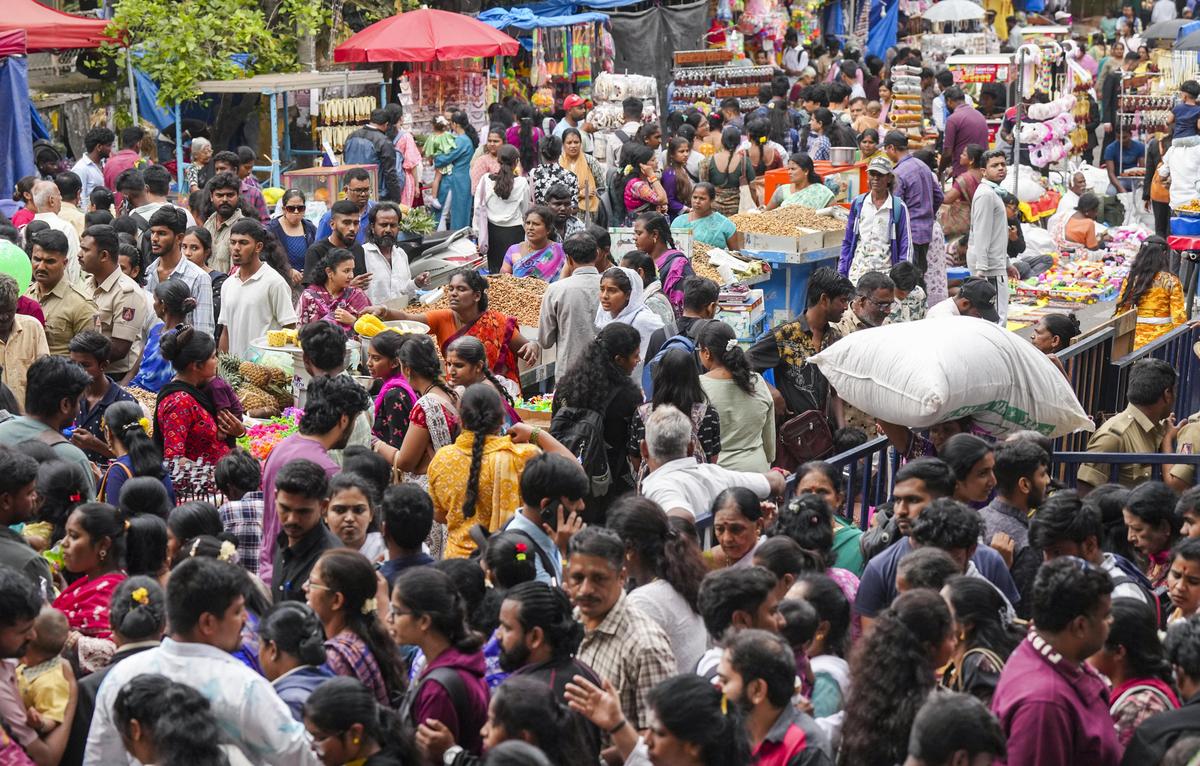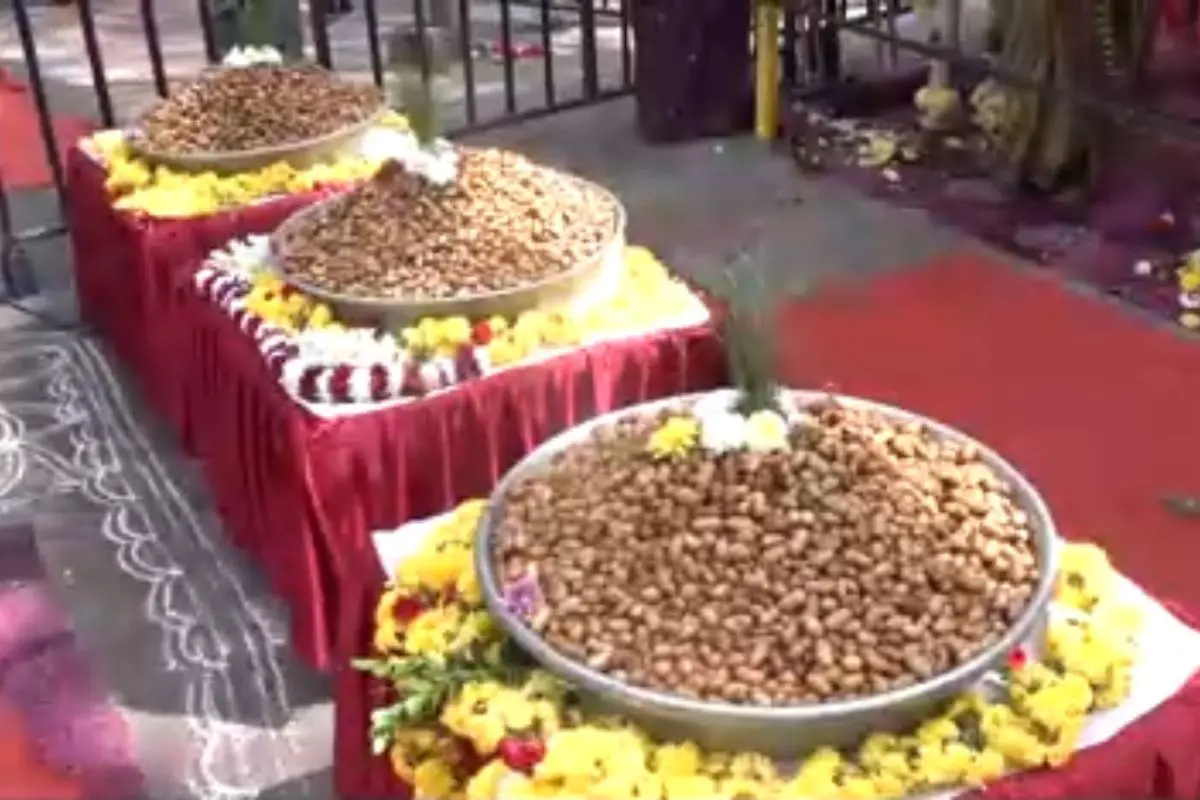The bustling streets of Basavanagudi witnessed yet another grand edition of the historic Kadlekai Parishe, an annual groundnut fair that has survived centuries of tradition, devotion, and cultural sentiment. This year, more than 12 lakh people visited the event, turning the area into a vibrant mix of vendors, farmers, residents, and tourists eager to celebrate Bengaluru’s heritage. However, this enormous gathering brought with it an urgent civic challenge: nearly 105 tonnes of waste were generated during the two-day fair. The striking volume of waste has sparked conversations on sustainability, responsibility, and the preservation of cultural festivals in changing times.
Kadlekai Parishe, held on the streets surrounding the revered Bull Temple, has been a cherished event for farmers across Karnataka, who travel long distances to sell their produce directly to consumers. For many, this is more than a market; it is a sacred offering to Nandi, believed to safeguard crops. The fair’s emotional value keeps it alive, but with rapid urban growth and rising consumerism, the environmental impact has become more difficult to ignore. This year’s waste figures have amplified the debate on how to retain culture while addressing modern ecological sensibilities.
A Heritage Celebration Strained by Urban Consumption
The Bruhat Bengaluru Mahanagara Palike (BBMP) deployed over 500 pourakarmikas to manage waste during the festival, along with additional trucks, supervisors, and monitoring squads. Even with these preparations, the massive turnout overwhelmed infrastructure, forcing civic workers to work overtime to segregate mixed wet and dry waste dumped by visitors. Street food packaging, plastic cups, groundnut shells, disposable plates, and leftover food formed the largest part of the garbage. Officials revealed that despite repeated announcements against littering, most visitors chose convenience over responsibility, leaving behind large piles near food stalls and walkways.
Traditionally, groundnut shells were not considered waste, as they served as cattle fodder or compost material in rural regions. However, urban visitors often disposed of them alongside plastics and food waste, making segregation extremely challenging. The BBMP had attempted to introduce more eco-friendly waste bins, yet segregation at source seemed nearly impossible in such a crowded space. The civic body acknowledged that without public participation, even the best systems cannot prevent waste mismanagement. As crowds continued enjoying the festive spirit, sanitation teams quietly battled tonnes of waste, exposing the unfair burden placed on civic workers.
Vendors have also become an increasingly important part of this conversation. Many street food sellers switched to single-use plastics due to affordability and convenience, even though they were informed about alternatives. Paper and arecanut plates were used widely, but liquids and snacks were still served in plastic cups and laminated covers, which are harder to recycle. Farmers selling groundnuts used cloth sacks and paper, but traders selling baked items, instant snacks, and chai often turned to disposable packaging. As consumer demand grew through the day and into late-night hours, vendors struggled to maintain eco-compliance, prioritising sales over regulations.

Farmers expressed pride in being part of the event, which brings direct business without middlemen. Yet they too recognised the undeniable change in urban behaviours that make the fair increasingly difficult to sustain. While earlier generations carried their own bags, today’s customers rely on disposable carry options. Educational institutions, resident welfare groups, and social activists stress that responsibility cannot rest solely on the government—citizens must change their festival habits. The debate has transformed from “How do we manage waste?” to “How do we prevent waste?” This shift is crucial if Kadlekai Parishe is to remain both culturally vibrant and environmentally bearable.
Sustainability Push Sparks New Policy Ideas
The waste generated at this year’s event has encouraged suggestions for stronger policies ahead of future editions. Civic organisations propose mandatory guidelines banning plastics completely at cultural gatherings, while some activists urge the government to impose deposit systems for cups and plates, encouraging returnable items. Urban planners recommend extending composting units near festival streets to process organic waste like groundnut shells immediately. Others suggest that the BBMP collaborate with informal recycling workers to sort waste faster, instead of forcing them to segregate garbage already mixed carelessly by festival-goers.
Government officials are also exploring digital awareness campaigns that can reach younger audiences who attend such events in large numbers. QR-based information boards, mobile app notifications, and announcements from local influencers are among the proposals being discussed. Schools and colleges could adopt awareness drives, turning cultural participation into educational responsibility. Citizen groups argue that traditions should adapt to the era, not merely repeat nostalgia. They insist that sustainability must become a natural part of cultural pride rather than being treated as a bureaucratic instruction. The future of the fair may depend on whether tradition and modern awareness can meet halfway.
Several civic bodies are studying waste patterns from the fair to design better infrastructure for next year. For instance, decentralised waste collection could reduce littering by placing specialised bins at more frequent intervals. Signboards reminding visitors to segregate could be accompanied by volunteers guiding them. Vendors may be offered incentives if they adopt reusable containers, while those violating plastic regulations might face fines or denial of stalls. These ideas are still under discussion, but they reflect an important shift in how authorities view cultural events—not just as celebrations but as logistical challenges requiring deliberate planning.
Environmentalists warn that the issue is broader than just one festival. Bengaluru hosts multiple large-scale events every year, many of which generate enormous waste. Dasara processions, flower shows, and religious gatherings attract lakhs of visitors, but very little effort is made to integrate sustainability into their planning. Kadlekai Parishe, with its emotional significance, offers an opportunity to lead by example. If organisers embrace eco-conscious strategies, it could inspire several other cultural gatherings. The waste problem, therefore, is not an isolated inconvenience but a marker of how India is attempting to balance heritage and urban sustainability.
The 105 tonnes of waste collected this year must serve as a wake-up call rather than a repeated statistic. Cities often celebrate the scale of participation, but rarely reflect on the environmental cost. Bengaluru’s cherished festival deserves protection, not merely preservation. Sanitation workers, farmers, vendors, authorities, and lakhs of visitors are stakeholders in its future. To safeguard the historic Kadlekai Parishe, civic responsibility must extend beyond streets and bins and enter habits, consumption choices, and public awareness. Only then will the fair continue as a symbol of heritage without turning into a burden on the city that lovingly hosts it.
The financial cost of managing massive waste generation has become another major area of concern for the BBMP. Officials revealed that deploying extra workers, hiring additional vehicles, and transporting segregated waste across units significantly increases expenditure during large-scale events. The cost goes far beyond manpower; it includes landfill processing, recycling fees, and transportation logistics. When public littering increases, taxpayers unknowingly bear the burden of negligence. Civic experts argue that reducing waste at the source would cut costs drastically. Instead of spending heavily on clearing trash after events, the city could redirect those funds toward public amenities, environmental infrastructure, or heritage preservation.

Many residents living around Basavanagudi have voiced concerns about post-event hygiene and its impact on their daily lives. Streets near the Bull Temple remain crowded even after the fair ends, and waste often clogs storm drains before the cleanup is complete. The lingering smell of food waste, rotting shells, and stagnant remnants creates sanitation worries for families and shops located nearby. Local health practitioners warn that poor waste disposal during such gatherings can lead to rodent activity and insects, increasing the risk of infections. Residents insist that festival joy should not translate into days of pollution and discomfort for neighbourhoods that host it.
Technology-driven solutions are increasingly being suggested as a way to reduce waste at future editions of Kadlekai Parishe. Some experts envision an app-based monitoring system that allows vendors to register their waste output, while citizens could earn reward points for eco-friendly behaviour during the festival. Others propose RFID-enabled bins that track waste levels and generate alerts for faster collection. While these ideas may take time and investment, planners believe such innovations will eventually become essential in managing mega events. Technology, when aligned with tradition, can not only sustain cultural heritage but transform it into a model of modern civic discipline.
Voices from the farming community offer a different perspective. Many farmers believe that the culture of disposable waste is a reflection of urban lifestyles, not the festival’s inherent values. They point out that rural celebrations still rely on reusable materials and limited packaging, creating little waste. Some farmers advocate for awareness campaigns that highlight indigenous sustainable practices, including the use of banana leaves, natural fibres, and reusable containers. They argue that promoting traditional eco-friendly habits would make the festival more authentic, healthier for the city, and truer to its cultural roots. For them, protecting the event means protecting its original simplicity.
Young volunteers from various organisations stepped in during the event, demonstrating how youth participation could change waste management practices. Groups of students educated visitors about segregation, distributed cloth bags, and guided children in proper disposal. Their presence generated positive responses and encouraged mindful disposal among many families. Activists noted that children, when educated early, often influence adults and reshape collective habits. Encouraging volunteer participation at larger scales could make future events more responsible and community-driven. With training, coordination, and incentives, youth groups could become ambassadors of zero-waste festivals, turning civic responsibility into a movement rather than a task for authorities alone.

Ultimately, the fate of Bengaluru’s iconic fair depends not on controlling the number of visitors but on transforming their behaviour. The love for Kadlekai Parishe must evolve into respect for the spaces that host it. Litter-free participation should become a point of pride, just like buying the first groundnut of the season. Rather than viewing waste management as a post-event inconvenience, it must be embraced as part of the celebration itself. Bengaluru’s heritage is not only about rituals and gatherings but about how its people care for their city. Culture thrives when citizens protect tradition with mindful, responsible action.
Follow: Karnataka Government
Also read: Home | Channel 6 Network – Latest News, Breaking Updates: Politics, Business, Tech & More

